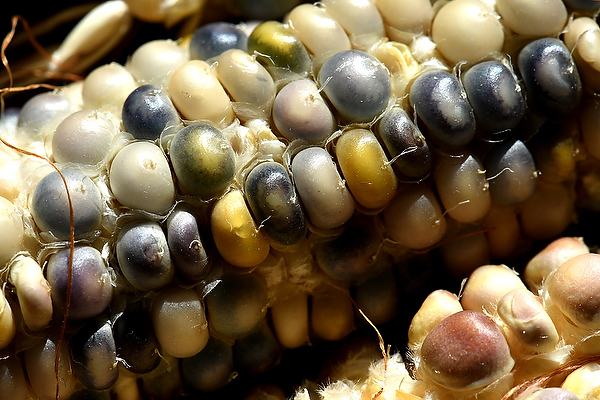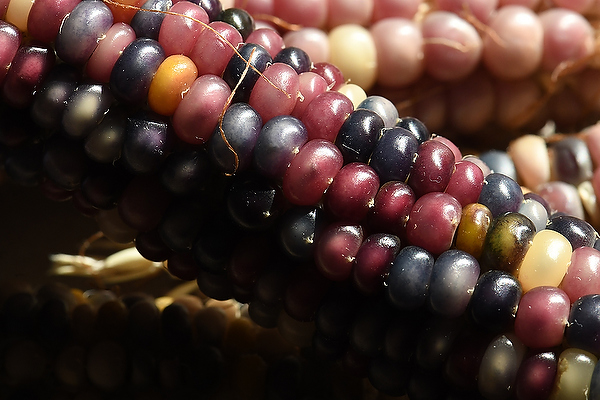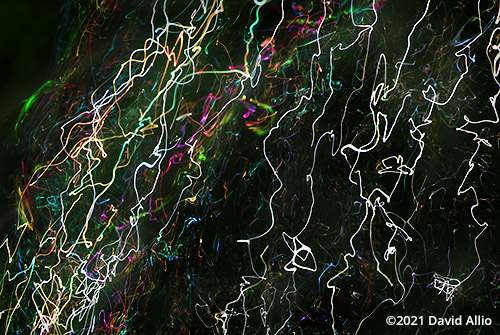
Glass Gem Corn – Visual Art Collection
Poaceae Zea mays is the botanical family, genus, and species name for Glass Gem Corn. Poaceae Gramineae, commonly known as the grass family, evolved Zea mays from a cultivated annual grass originating in Mexico. By the time Carl Barnes found the volunteer maize in his Oklahoma field, this grass had developed into stalk-like plants with a variety of unique seeds.
camera: Nikon D850 | lens: AF-S Nikkor VR 105mm f/2.8G IF-ED
focal length: 105mm | exposure: f/18 – 1/250th second – ISO 1000
credit: NPR.org/All Things Considered, 2019 Nov 25
note: the USDA Plants database was offline during the research for this text

Glass Gem Corn – Visual Art Collection
Glass Gem corn Poaceae Zea mays was originally produced in the 1980s when Oklahoma Cherokee Carl Barnes cross-pollinated a mixture of Pawnee miniature popcorn, Osage Red Flour, and Osage Greyhorse corns. Barnes isolated these three rainbow varieties of ancestral corns from plants which volunteered in his fields.
Greg Schoen, encouraged by Barnes, later crossed the original Glass Gem variety with Pueblo corn to produce more brilliant colors and glasslike sheen present in this contemporary ornamental maize. This corn is Non-GMO, selectively bred through open pollination. Unique to this strain of flint corn, every ear is different. It is considered extremely rare or exotic.
Glass Gem corn is one of nearly 2,000 unique and rare varieties conserved in the non-profit organization Native Seeds/SEARCH. This group conserves, distributes, and documents the adapted and diverse varieties of agricultural seeds, their wild relatives and the role these seeds play in cultures of the American Southwest and northwest Mexico. They promote the use of these ancient crops and their wild relatives by gathering, safeguarding, and distributing their seeds to farming and gardening communities.
camera: Nikon D850 | lens: AF-S Nikkor VR 105mm f/2.8G IF-ED
focal length: 105mm | exposure: f/18 – 1/125th second – ISO 1000
credit: NPR.org/All Things Considered, 2019 Nov 25
note: the USDA Plants database was offline during the research for this text

Reflective Play – Visual Art Collection
What do you see?
Does it make a difference in your interpretation of the scene if the image is horizontal instead of vertical?
Have you reached a determination regarding the subject of the work of photographic impressionism?
camera: Nikon D850 | lens: AF-S Nikkor VR 105mm f/2.8G IF-ED
focal length: 105mm | exposure: f/18 – 1/10th second – ISO 31


